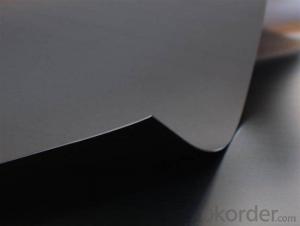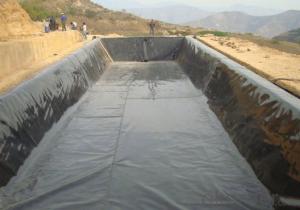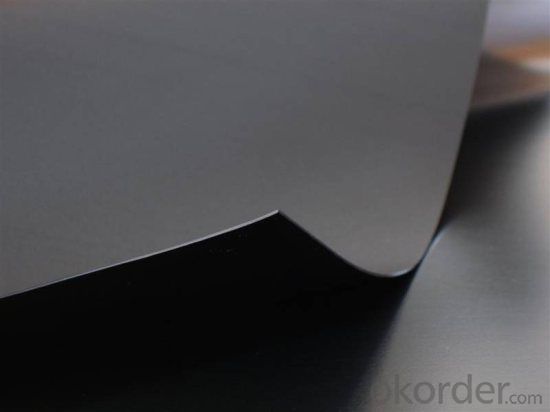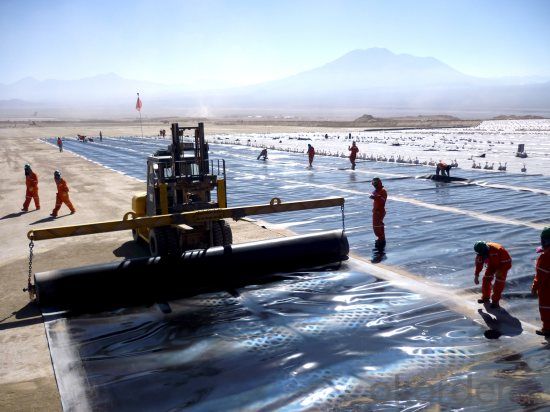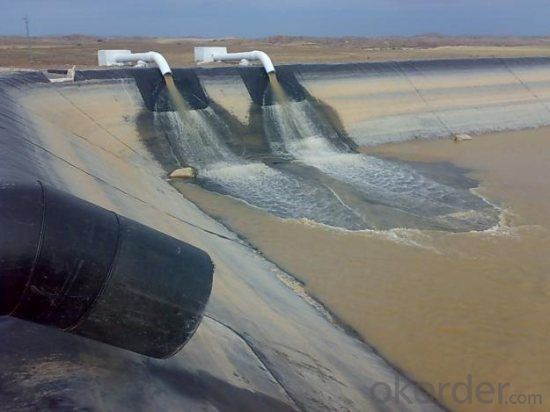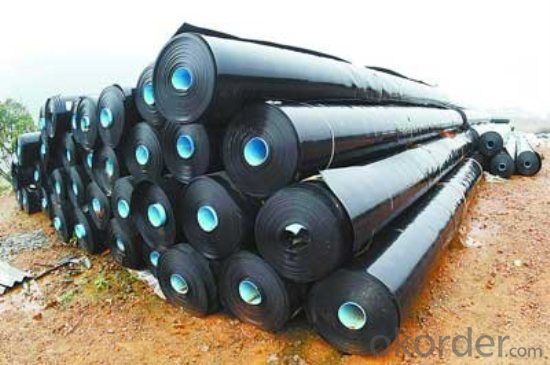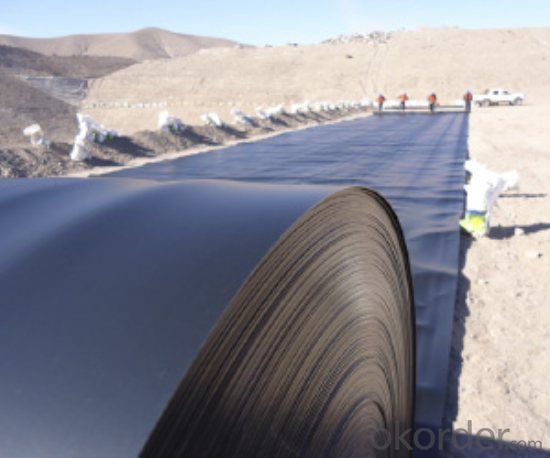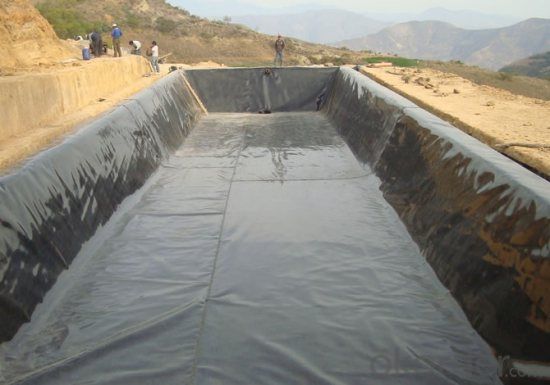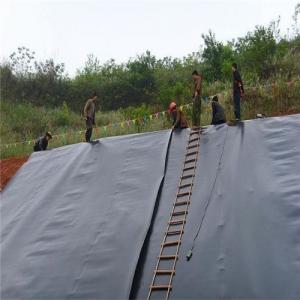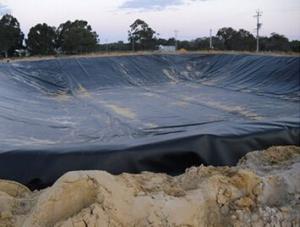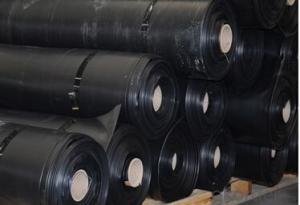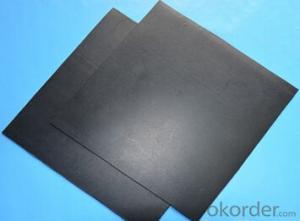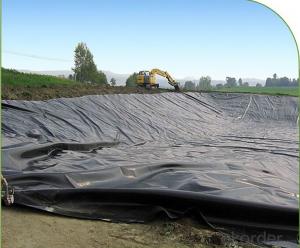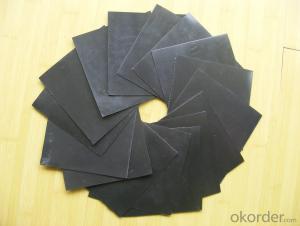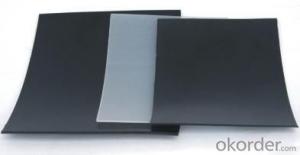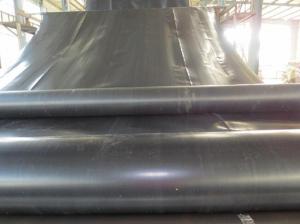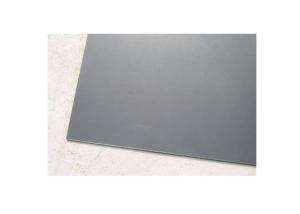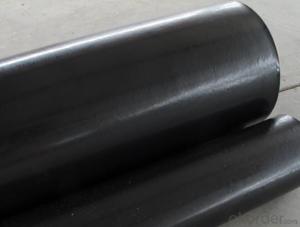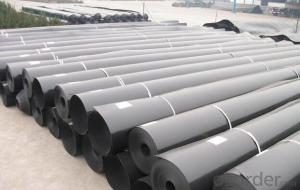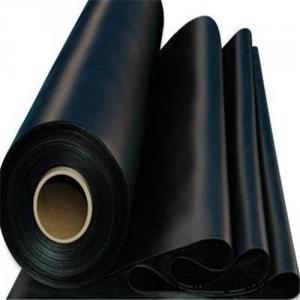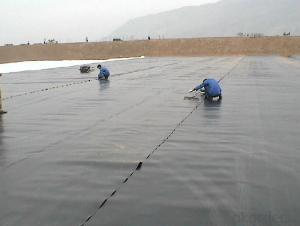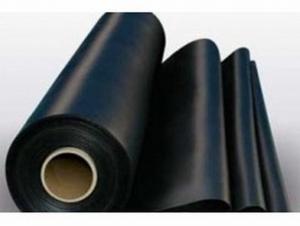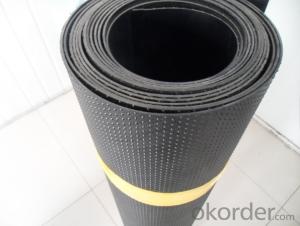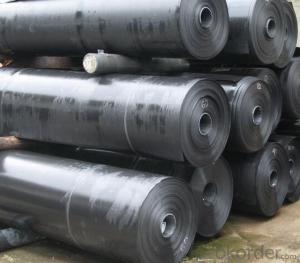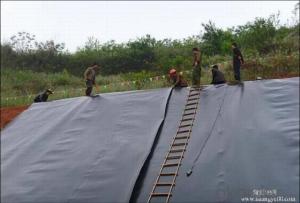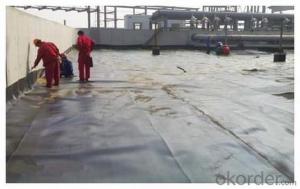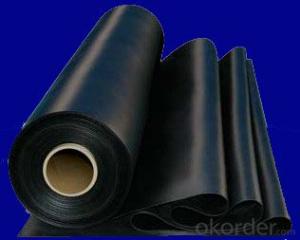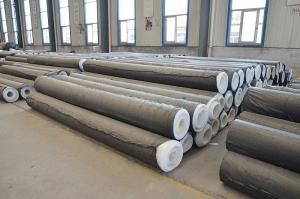Geomembrane Anchor HDPE for Architectural Engineering
- Loading Port:
- Qingdao
- Payment Terms:
- TT or LC
- Min Order Qty:
- 10000 m²
- Supply Capability:
- 100000 m²/month
OKorder Service Pledge
OKorder Financial Service
You Might Also Like
Geomembrane HDPE for Architectural Engineering
Description Of Geomembrane HDPE for Architectural Engineering
Geomembrane, also known as water-proof plate, is made from polymer materials like polyethylene, through blow molding.
Main Features of Geomembrane HDPE for Architectural Engineering
By its raw materials - molecular structure, Polyethylene (PE) geomembrane is divided into low-density polyethylene (LDPE) geomembrane, linear low density polyethylene (LLDPE) geomembrane, high-density polyethylene (HDPE) geomembrane;Aside from colorless and transparent raw material, you can made it into the black, green, blue, yellow, etc by adding different color masterbatch., also made into geomembrane with the black front and the blue back or other 2 different colors as required by customers.
Applications of Geomembrane HDPE for Architectural Engineering
1. HDPE geomembrane is applicable to environmental protection and sanitation: such as landfill, sewage treatment plant, power plant adjustive pool, industrial, hospital solid waste;
2. HDPE geomembrane is applicable to hydraulic engineering: such as seepage control, plugging, reinforcement for rivers, lakes and reservoirs and dams, drainage seepage control, vertical core wall, slope protection, etc.
3. HDPE geomembrane's applications in municipal engineering: subway, underground works of the building, planting roof, roof garden, sewage pipe seepage control;
4. Polyethylene impermeable membrane is applicable to the garden: artificial lake, river, reservoir, golf course pond bottom, slope, green lawn waterproofing and damp-proofing;
5. High density polyethylene geomembrane is applicable to petrochemical industry: chemical plant, oil refinery, storage tank seepage control, chemical reaction cell, lining and secondary lining for sedimentation tank, etc.
6. Polyethylene geomembrane is applicable to mining: washing pool, soaking pool, the ash-field, dissolving pool, settling pool, yard, tailings substrates seepage control;
7. Low density polyethylene geomembrane for transport facilities: foundation reinforcement for the road, culvert seepage control;
8. HDPE geomembrane is applicable to agriculture: seepage control for reservoir, drinking water pool, water storage pond, irrigation system;
9. HDPE geomembrane is applicable to aquaculture industry: the lining of intensive factory farming ponds, fish ponds, shrimp ponds, the sea cucumber ring slope protection, etc;
10. HDPE geomembrane is applicable to Salt industry: saltworks crystalline pool, brine pool thatch cover, salt membrane, the salt pool plastic sheet membrane.
IMages of Geomembrane HDPE for Architectural Engineering
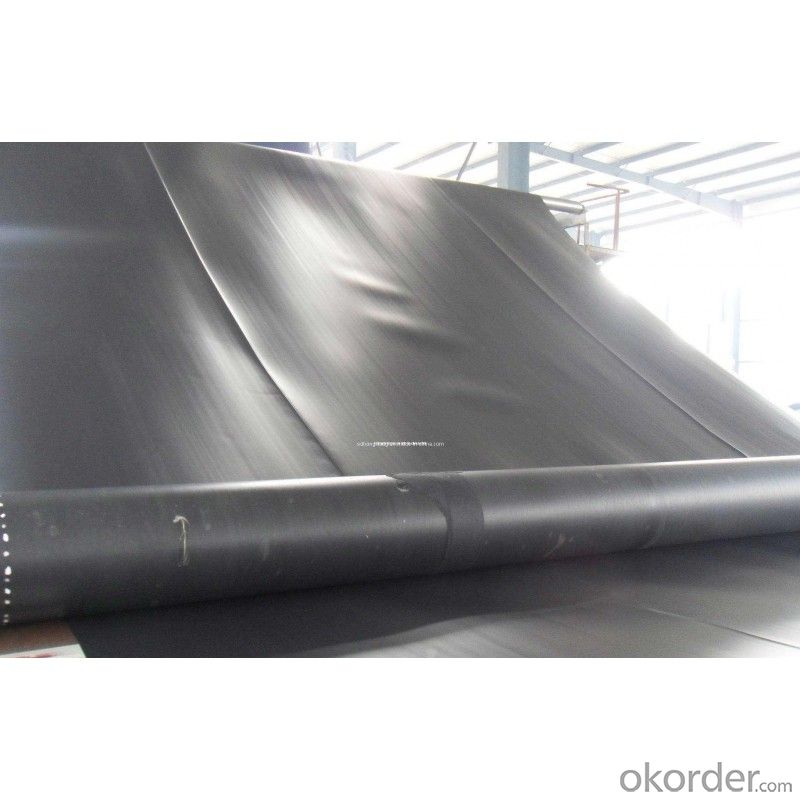
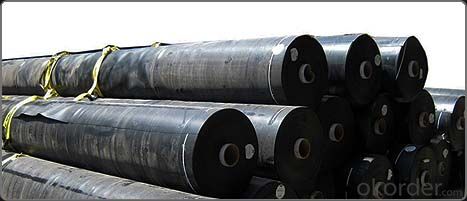
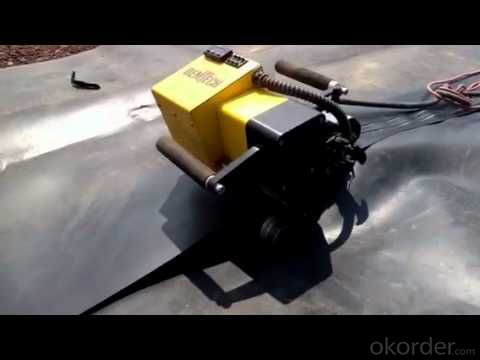
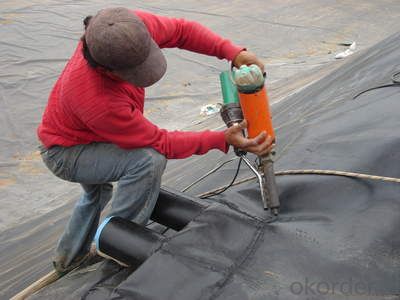
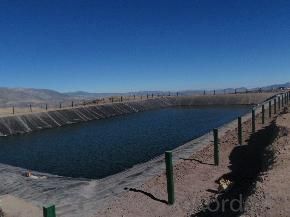
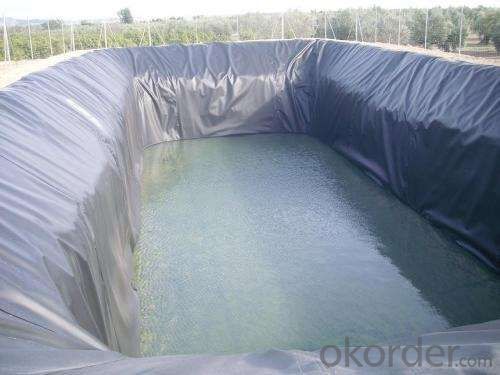
FAQ:
1. What are we supplying?
We are specialized in producing .geotextile , geocell, geogrid, geomembrane
2. How Many years experience do we have?
We have been exported to more than 15 countries in the past 10 years.
3. How long do we usually reply your request?
We always reply our customer within 12 hours.
- Q: which is more often used between the common membrane and the glass membrane static electricity?
- the glass membrane static electricity is used more often because we should choose from the length of time. if the pasting time is long, then using the static electricity membrane, to avoid the packaging film hard to tear up when the film is in aging. The time is relatively short then using the glue, because the viscosity is good, and firmly pasted.
- Q: What are the differences of seepage-proof membranes, geomembranes and waterproof membranes? Can they be used together?
- Seepage-proof membranes are mainly used in the waterproof control of civil engineering, are also widely used in municipal public sectors and highway engineerings, especially are commonly used in the slope protection; geomembranes are seepage-proof membranes with geotextiles as main materials.
- Q: What are the differences between seepage-proof geomembrane and impermeable geomembrane?
- Just different names, products are the same.
- Q: Are geomembranes resistant to UV degradation in different climates?
- Yes, geomembranes are generally resistant to UV degradation in different climates. However, the extent of their resistance may vary depending on the specific material composition and the intensity of UV exposure in a particular climate.
- Q: What are the requirements for geomembranes used in fish ponds?
- The requirements for geomembranes used in fish ponds typically include being durable, impermeable, and resistant to UV radiation, chemicals, and punctures. They should also be able to withstand the weight of water and have a smooth surface to prevent damage to the fish and their habitat. Additionally, the geomembranes should be non-toxic and safe for the fish and the environment.
- Q: how is the metal plating ceramic film?
- Metallised ceramic membrane is coat effective, the advantages are as follows: ① good chemical stability, acid and akali resistant and organic solvents; ② strong antimicrobial ability, it can be used in biochemistry, medicine, food and other fields; ③ high mechanical strength, it can withstand tens of atmospheres, and regenerate under high pressure ; ④ high temperature resistant, generally around 773K,up to 1073K ~ 1273K;
- Q: Can geomembranes be used for decorative ponds?
- Yes, geomembranes can be used for decorative ponds. They are often used as liners to prevent water leakage and maintain the shape and integrity of the pond. Additionally, geomembranes come in various colors and textures, allowing them to blend seamlessly with the surrounding landscape, enhancing the aesthetic appeal of the pond.
- Q: Are geomembranes resistant to leachate chemicals?
- Yes, geomembranes are specifically designed to be resistant to leachate chemicals.
- Q: Is waterproof geomembrane the same as EPDM?
- Not the same, different material
- Q: How do geomembranes perform in high water pressure applications?
- Geomembranes perform well in high water pressure applications due to their strong and impermeable nature. They are designed to withstand the pressure exerted by water and prevent any leakage or seepage. The high tensile strength and durability of geomembranes make them suitable for use in various water containment and protection systems, ensuring reliable performance even under challenging conditions.
Send your message to us
Geomembrane Anchor HDPE for Architectural Engineering
- Loading Port:
- Qingdao
- Payment Terms:
- TT or LC
- Min Order Qty:
- 10000 m²
- Supply Capability:
- 100000 m²/month
OKorder Service Pledge
OKorder Financial Service
Similar products
Hot products
Hot Searches
Related keywords
